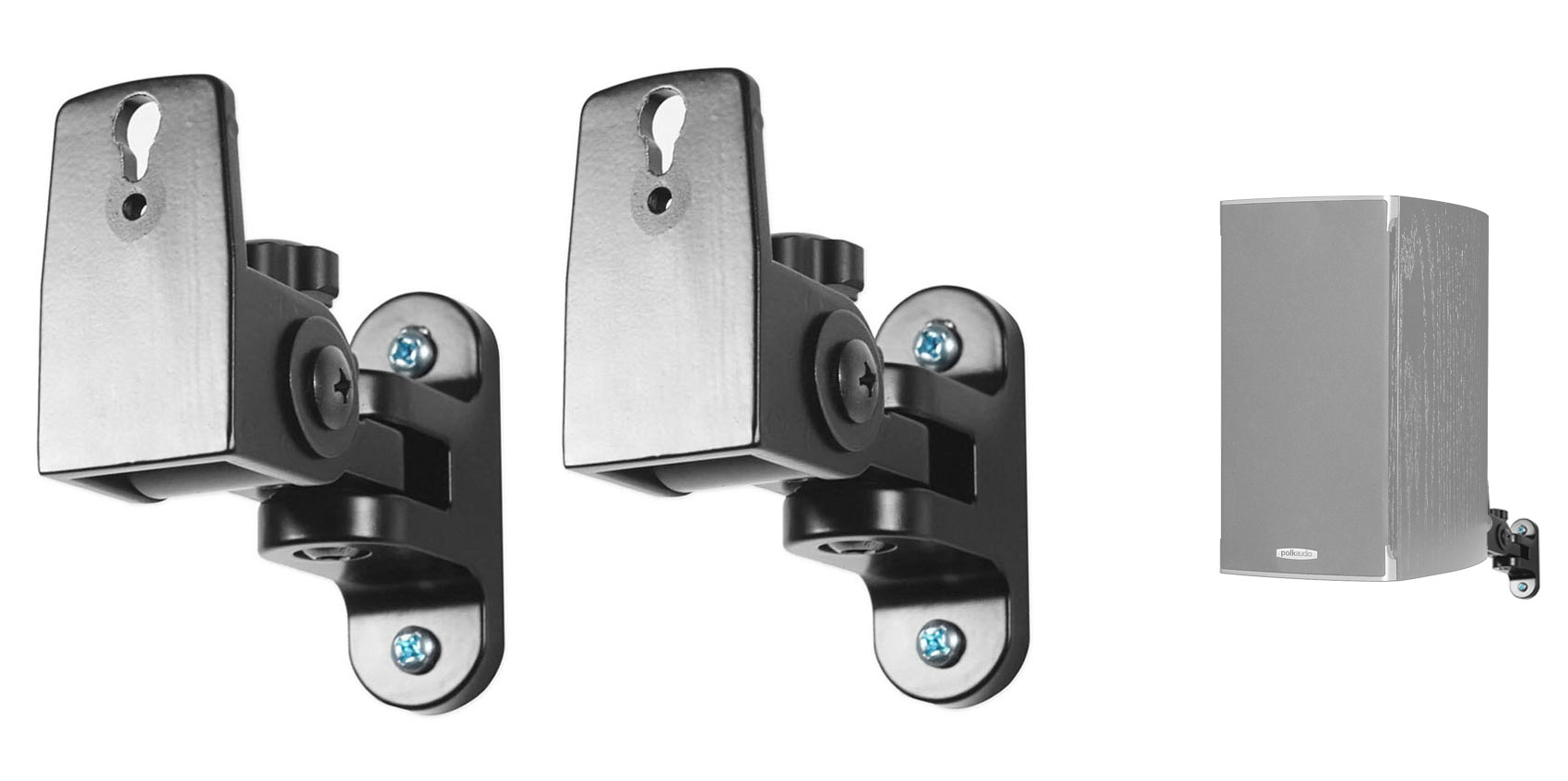
If you need to make it longer than that you may need to get more than one set of brackets. I made my floating shelf 55″ long so it was about 2/3 the size of our couch since I was installing it over the couch. Cut wood to sizeįirst, determine how long your floating shelf needs to be. But, if you use a different size bracket, make sure to use a different size spade bit! For the 1/2″ bracket rod, use a 9/16″ spade bit. ***Note: Originally, I used a 7/8″ drill bit which works, but after making these again, I used a 13/16″ spade drill bit instead which is just 1/16″ bigger than the 3/4″ bracket rod.
#Hidden wall brackets how to#
How to Make an Easy DIY floating shelf with brackets However, if you are making wider shelves (closer to 12″ wide) and shelves that are heavier, I would only use these brackets if you can secure them to the wall studs instead of drywall with anchors.įor this tutorial since I only used a 7 1/4″ deep shelf, wall anchors worked well! Although, I do recommend using better quality wall anchors than what comes with the brackets if you do use them. The brackets I used, as well as these alternative floating shelf brackets, can be used for shelf depths of 7″ to 12″. My wood shelf depth was 7 1/4″ because I used a 2×8 board in this tutorial. Here are even more floating shelf bracket options too! Floating Shelf Depths and Hardware Update: The brackets I used are no longer available, but these floating shelf brackets are very similar and only 1″ thick, so they would be totally hidden behind the 2×8 wood board that is used in this tutorial! I decided to go with them because they are heavy duty and I only needed to buy two of them to support my longer shelf with heavier items.

However, once hung on the wall it’s really hard to tell unless you get up close. The brackets that I used are about 1/8″ thicker than a 2×8 (which is 1.5″ thick).
#Hidden wall brackets install#
The advantages to using these steel brackets were that I could use them with solid wood (that’s 1.5″ thick) and they were easy to install and they are easy to remove (if needed in the future).Īlso, I love that they are hidden which provides a more modern floating shelf look! Floating Shelf Bracket Details But this time I wanted to keep things more simple and use hidden, heavy duty steel brackets (similar here). In the past I’ve made a DIY floating shelf with no brackets for my office makeover. Note, this post contains some affiliate links. This project was super easy and you only need one piece of wood and a set of brackets! It was one of my favorite projects in our modern rustic living room makeover and is a major focal point in the room! If it doesn’t move or wobble, it’s ready to support weight.On the main wall in our living room, we added an easy DIY floating shelf with brackets. Apply some pressure to the bracket with your hand. Test the Bracket: Before placing any weight on the bracket, test it to ensure it’s firmly installed.Tighten the screws using a screwdriver until the bracket is secure. Then insert screws through the bracket’s holes and into the wall plugs or directly into the wall. Attach the Bracket: Position the bracket over the drilled holes, aligning the holes in the bracket with those in the wall.These devices provide a secure grip for the screws within the wall. Insert Wall Plugs: If you’re installing the bracket in a hollow wall, you’ll need wall plugs, also known as anchors.Always wear safety goggles to protect your eyes from dust. It’s important to consider the type of wall (drywall, brick, or concrete) and use the appropriate drill bit and technique. Drill Holes: Based on the marked positions, drill holes into the wall.If you are installing more than one bracket, measure the distance between them carefully to ensure they are evenly spaced. It’s essential to ensure that the markings are level – a spirit level can be handy for this. Mark the Position: Use a pencil to mark the position of the bracket on the wall.Consider the function of the bracket, the weight of the object it will support, and the structure of your wall. Choose the Right Spot: Determine where you want to install the bracket.The installation process varies based on the type of wall bracket, but here are some general steps:


 0 kommentar(er)
0 kommentar(er)
